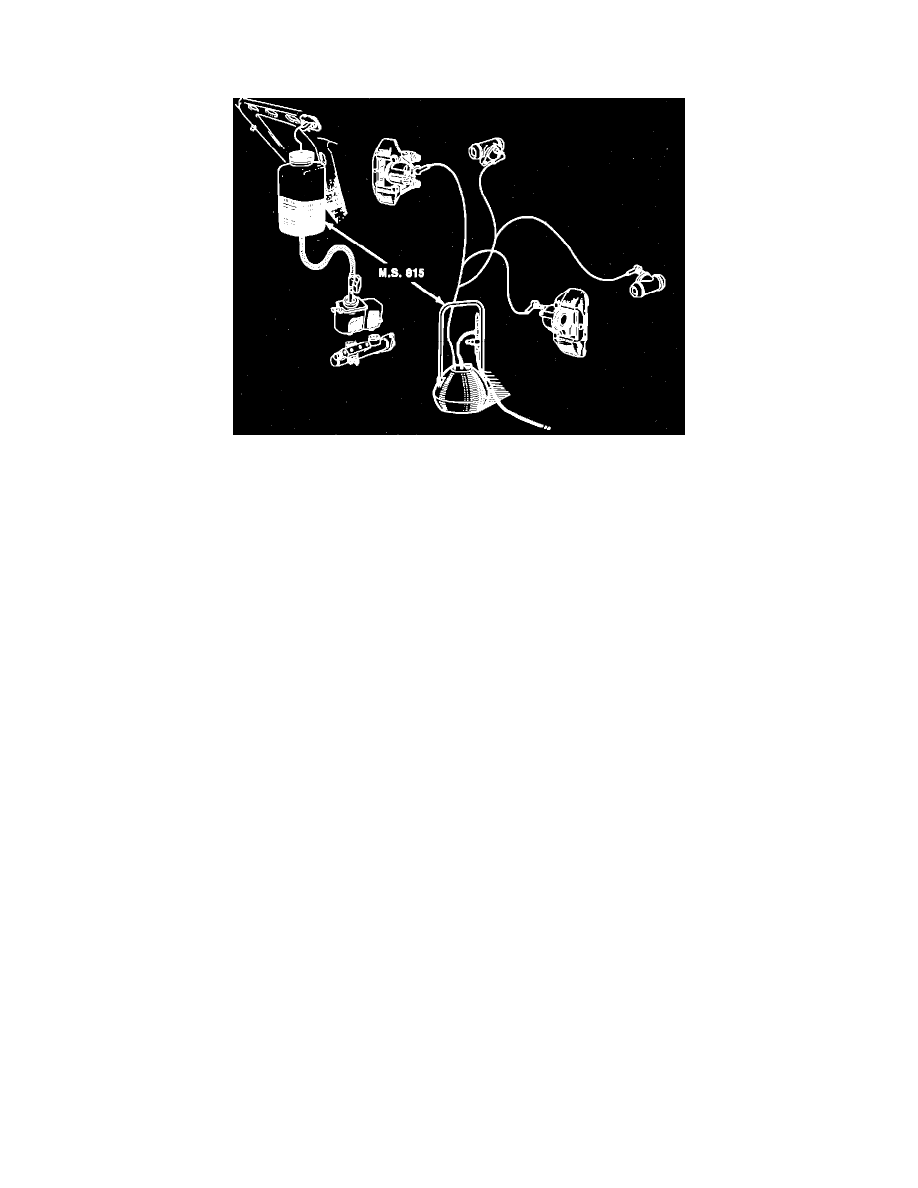Stealth R/T V6-2972cc 3.0L DOHC (1991)

Brake Bleeding: Service and Repair
Pressure Bleeding (Preferred Procedure)
Fig. 35 Power Bleeding Brakes & Premier
Pressure bleeding is recommended for all hydraulic brake systems. It is the fastest method because the master cylinder is automatically fed brake fluid
from the pressure bleeder reservoir, and no pedal pumping is needed, so only one person is required to perform the procedure. However, if pressure
bleeding equipment is not available, the hydraulic system may be bled manually, refer to MANUAL BLEEDING.
When pressure bleeding, to prevent air from getting into the hydraulic system, do not shake the pressure tank. Set the tank in the required location,
bring the air hose to the tank, and do not move it during the bleeding operation. The tank should be kept at least one-third full.
The bleeder valve should be opened at least one full turn, and intermittently closed at about four-second intervals. This gives a whirling action to fluid in
the hydraulic system, and helps expel the air. Refer to Brakes and Traction Control/Brakes/Specifications/Mechanical for proper wheel bleeding
sequence.
PRECAUTIONS
Normal pressure from the pressure bleeder should not be greater than about 35 psi. On vehicles equipped with plastic reservoirs, do not exceed 25 psi
bleeding pressure.
On models with hold-off valves contained in the combination valve, the valve stem on the outside of the combination valve must be held in position
during bleeding using valve holding tool No. C-4121 or equivalent.
